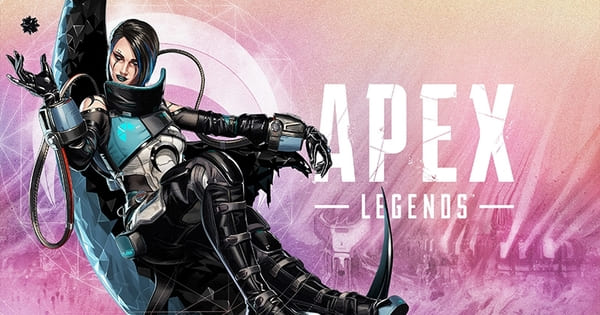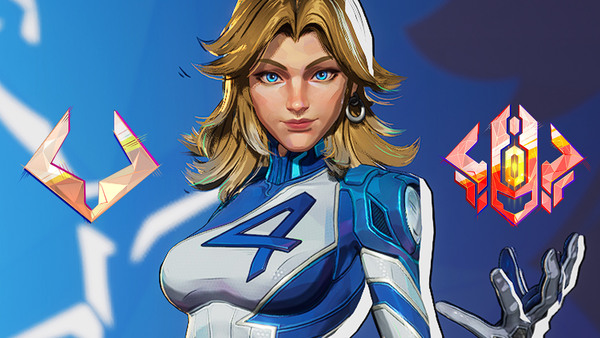Advertisement
Popular Now
Apex Legends, the free-to-play battle royale developed by Respawn Entertainment, has garnered widespread praise for its dynamic gameplay, unique characters, and fast-paced action. Launched in February 2019, the game quickly became one of the most popular titles in the battle royale genre. However, despite its success, one of the most persistent issues that has plagued Apex Legends over the years is the Ranked Mode matchmaking. While the ranked system was introduced to create a competitive environment and reward skilled players, it has led to significant frustration and dissatisfaction within the community. Matchmaking issues, smurfing, and a lack of proper rewards have contributed to a decline in the ranked experience.
This article will explore the specific issues that have plagued Apex Legends' Ranked Mode, examining how matchmaking has evolved (or devolved), how smurfing has become a significant problem, and how Respawn's handling of these issues has affected the game's competitive integrity. We’ll also discuss potential solutions and the community's response to these ongoing concerns.


 Aside from matchmaking and smurfing issues, the rewards for climbing the Ranked ladder have also been a topic of discussion. While players are given cosmetic rewards based on their performance in Ranked Mode, many argue that the progression system feels lackluster. Higher-ranked players often feel that the rewards don’t match the effort required to reach such positions.
Aside from matchmaking and smurfing issues, the rewards for climbing the Ranked ladder have also been a topic of discussion. While players are given cosmetic rewards based on their performance in Ranked Mode, many argue that the progression system feels lackluster. Higher-ranked players often feel that the rewards don’t match the effort required to reach such positions.

The Promise of Ranked Mode
When Apex Legends first introduced its Ranked Mode in Season 2, it was a welcome addition for many players seeking a competitive edge in the game. Ranked Mode allowed players to compete at different skill levels and earn rewards based on their rank. The idea was simple: players could showcase their skills in a more structured and competitive environment, with the rewards providing an incentive to improve. Initially, the Ranked Mode used a tiered ranking system, from Bronze to Predator, with each rank requiring players to earn Ranked Points (RP) by placing well in matches or eliminating other players. The introduction of these ranks gave players a clear sense of progression and purpose, while the higher-tier ranks like Diamond and Predator provided a sense of prestige. The Ranked Mode was built with the promise of fair matchmaking, which would allow players of similar skill levels to face off against one another.Early Enthusiasm for Ranked Mode
Upon its launch, Apex Legends' Ranked Mode was met with excitement, as it provided a break from the chaotic, casual gameplay. Players could now demonstrate their skill in a more structured environment and be rewarded for it. However, as time went on, issues began to surface, which would slowly erode the experience for many players.Matchmaking Issues: The Core of the Problem
One of the most significant complaints about Apex Legends' Ranked Mode is the flawed matchmaking system. Despite Respawn's intentions for a fair and balanced ranked experience, many players have expressed frustration with how the system pairs players together. Instead of matching players based on skill level, the system has been criticized for placing players in lobbies with significant skill disparities, making the games feel unbalanced and frustrating.
Skill Disparities: A Growing Issue
In Apex Legends, players are supposed to be matched according to their rank—from Bronze all the way to Predator. However, due to issues in how the matchmaking system works, players have frequently found themselves in lobbies where there is a large skill gap between themselves and the rest of the team or enemies. For example, a high Platinum player may be placed in a match with Diamond-level or even lower-tier players, which often results in an unfair advantage or disadvantage for certain teams. This problem is particularly noticeable in the higher ranks. In matches with players from Diamond to Predator, the level of competition can vary drastically, making it difficult for players to feel that their matches are a true test of their skill. Some players claim that they frequently encounter extremely skilled opponents or players who do not belong in the rank they are currently in, leading to the feeling that Ranked Mode is not offering a fair competitive experience.The Rise of Smurfing: Lowering the Quality of Ranked Matches
Another significant issue in Apex Legends' Ranked Mode is smurfing—the practice of high-level players intentionally creating new accounts to play against lower-ranked opponents. Smurfing has long been a problem in competitive multiplayer games, and Apex Legends is no exception. Smurfers often exploit the Ranked system by deliberately playing at lower ranks to stomp on new or inexperienced players, frustrating the player base and degrading the overall experience.The Impact of Smurfing on Player Experience
Smurfing creates an environment where new players or players in lower ranks are faced with overwhelming challenges, often leading to early frustration. These smurfs may use their advanced knowledge of the game to outplay and dominate the match, which is discouraging for players who are trying to learn the game and improve their skills. Respawn has attempted to curb smurfing in Apex Legends by introducing various systems, including account verification methods and tracking IP addresses to spot suspicious behavior. However, these efforts have had limited success. Smurfing continues to be a prevalent issue, and many players feel that the developers have not done enough to address it, leading to a loss of trust in the competitive integrity of Ranked Mode.Smurfing in High-Tier Ranked Lobbies
The problem of smurfing is most severe in the highest-ranked lobbies, particularly at the Diamond, Master, and Predator levels. In these ranks, smurfs can easily infiltrate games, throwing off the balance of the match and further frustrating high-level players who are attempting to climb the ranks legitimately. Smurfing at this level can feel especially discouraging for players who have spent hours refining their skills, only to encounter opponents who are clearly much more experienced.The Stagnation of Rewards and Progression
 Aside from matchmaking and smurfing issues, the rewards for climbing the Ranked ladder have also been a topic of discussion. While players are given cosmetic rewards based on their performance in Ranked Mode, many argue that the progression system feels lackluster. Higher-ranked players often feel that the rewards don’t match the effort required to reach such positions.
Aside from matchmaking and smurfing issues, the rewards for climbing the Ranked ladder have also been a topic of discussion. While players are given cosmetic rewards based on their performance in Ranked Mode, many argue that the progression system feels lackluster. Higher-ranked players often feel that the rewards don’t match the effort required to reach such positions.
Cosmetic Rewards and Their Impact
The rewards for ranking up are mostly cosmetic—such as skins, banners, and badges—which, while desirable, don't necessarily feel like meaningful incentives. Cosmetic rewards are common in free-to-play games, but for many players, the lack of tangible progression or in-game benefits from higher ranks makes the grind feel unrewarding. The absence of unique rewards or more impactful incentives for players who reach the highest levels (like Predator) has led to dissatisfaction, especially in a competitive environment.Communication Issues: Lack of Transparency
Another issue that exacerbates the situation is the lack of transparency from Respawn Entertainment regarding the ranked system and the problems players are facing. Although the developers have made efforts to address some concerns, they have not always communicated effectively with the community about what is being done to fix major issues like matchmaking, smurfing, and rewards.The Community’s Frustration with Transparency
Players have expressed frustration with the limited updates from Respawn about the state of Ranked Mode. Changes are often implemented without clear communication, leaving players unsure of what is being fixed or improved. This lack of transparency has fueled suspicion and resentment among the player base, further harming the relationship between developers and players.Respawn’s Attempts at Fixing Ranked Mode
Over the course of Apex Legends' life cycle, Respawn has made multiple attempts to improve the Ranked experience. They’ve introduced new ranking systems, made adjustments to RP farming and matchmaking, and tried to address the smurfing issue. However, many of these changes have been met with mixed results, and the overall sentiment among the community remains that the system is still deeply flawed.Changes in Ranked Points and Matchmaking
In an effort to reduce RP farming and improve matchmaking quality, Respawn has periodically adjusted the cost of Ranked Points and made changes to how points are awarded in Ranked Mode. These adjustments have been intended to reward more competitive play while discouraging players from exploiting the system to gain easy RP through suboptimal strategies. While these changes have had some success, the fundamental issues of matchmaking and smurfing have remained largely unresolved.What Can Be Done? Potential Solutions to Fix Ranked Mode
The issue with Apex Legends' Ranked Mode is multifaceted, requiring a comprehensive approach to fix it. Some potential solutions could include:- Improved Matchmaking Algorithms – Respawn should continue to refine matchmaking to ensure that players are matched with others of similar skill levels. This might involve expanding the match search time to accommodate better balancing and taking into account a wider range of factors beyond rank.
- Stronger Anti-Smurfing Measures – While Respawn has made attempts to stop smurfing, there is still room for improvement. More aggressive methods, such as account verification, IP tracking, and even in-game penalties for smurfs, could be explored to make it more difficult for experienced players to exploit lower ranks.
- More Meaningful Rewards – To keep players motivated, Respawn could offer more substantial rewards for climbing the ranks, such as unique skins, weapons, or even gameplay-impacting rewards that are exclusive to the higher ranks.
- Better Communication – Respawn needs to prioritize transparency and communication with the community. Regular updates on fixes, improvements, and changes to the Ranked Mode could go a long way in rebuilding player trust.

















